
What a difference a year makes! When I did my portfolio review for 2022, I was down by about a third in just one year, 12% worse performance than the S&P 500 index. Back then, I wrote that I lean toward an improving stock market in the following 12- to 24- months. Here we are in early 2024 and the market has already fully recovered from the 2022 drawdown.
As expected, my stock portfolio’s 2023 performance has been excellent: 46% IRR, followed closely by NASDAQ at 43% and S&P 500 at 24%.
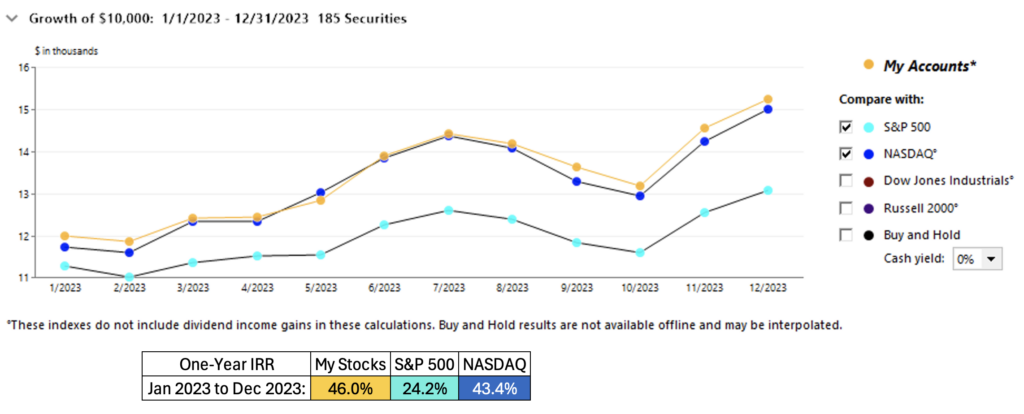
Last year’s recovery was led mostly by the same names that also led the drop in 2022. This table from that last year’s post show my top 20 performance detractors. The list would be nearly the same for my 2023 top gainers, with the notable exception of a few holdings that haven’t recovered yet, namely PayPal, Disney, IPG Photonics, and American Tower. [Back in March 2022, I wrote that three of my stocks were down by more than 50%. Out of those three, Meta has already recovered and risen to new highs while IPGP and PayPal are still laggards.]
What went down in my portfolio in 2022 recovered nearly as quickly in 2023. But this was not the case for all public stocks. I pointed out in the last year’s review post that many non-profitable technology sector companies have negative 5-year returns in 2022. Those companies by and large are still not doing well.
As I say often in these yearly reviews, one-year performance doesn’t matter in the bigger scheme of things. In that vein, here are my 3- and 5-year portfolio performances:
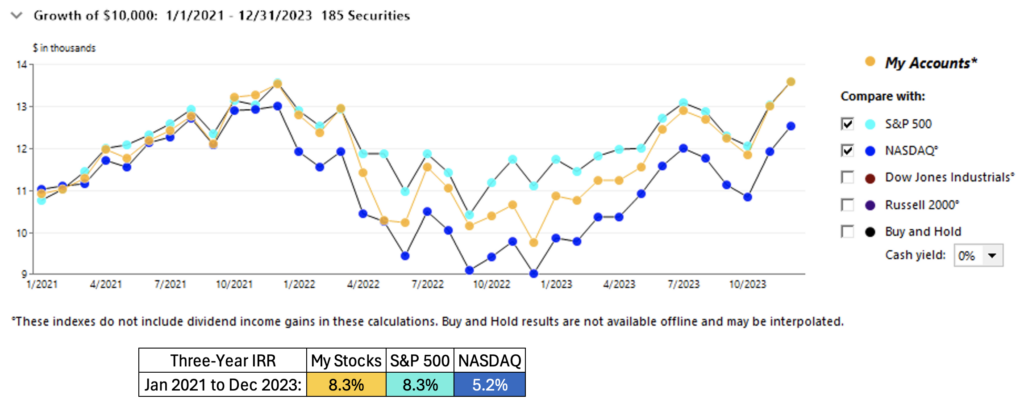
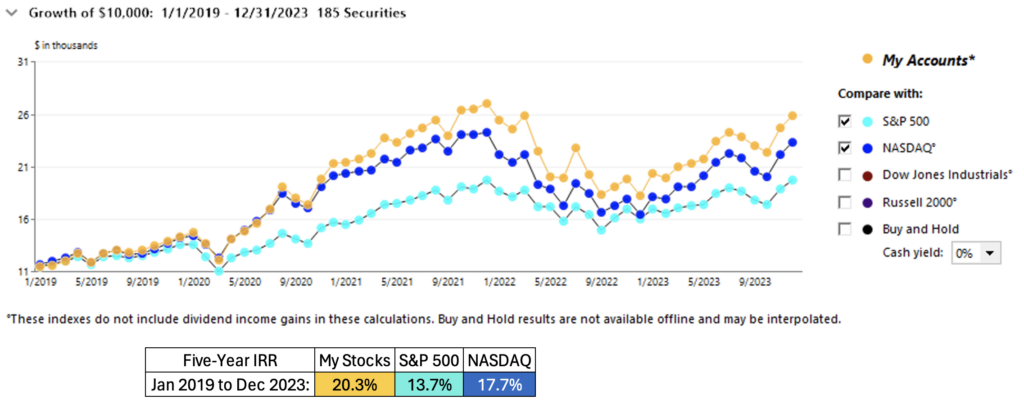
The three-year period covers the recent market cycle entirely, with the market peaking in early 2022 to its nadir in December followed by last year’s recovery. Because tech sector was affected worse in this downturn, NASADAQ lagged both the S&P 500 and my portfolio in this recent 3-year period. My stocks matched the S&P 500 performance even though I do own several mega-tech names that trade on NASDAQ.
It’s the five-year period where my portfolio outdistances both the S&P 500 and the NASDAQ. 20+% annualized return is substantial. The fact that it outpaces NASDAQ by more than 2% and the S&P by 6% is testament to the strengths of businesses I’ve invested in. Of course, the results vary for every rolling five-year period. Previous year’s 5-yr return was only 12% when the market was near its bottom. More importantly though, my performance has been consistently beating the indexes over every five-year period so far. See previous year-end reports: 2022, 2021, 2020
Even more importantly, my ten-year performance has also kept pace. As shown below, it is only just shy of my five-year return. And it further broke away from the indexes — increasing the performance gap with both S&P 500 and NASDAQ substantially. I wrote a blog post some six and a half years ago where I had pointed out that 20% returns, if sustained over long periods of time, are nothing to sneeze at. In 10 years, your money will have grown 6 times. In 20 years, 38 times. See the full post from October 2017 here.
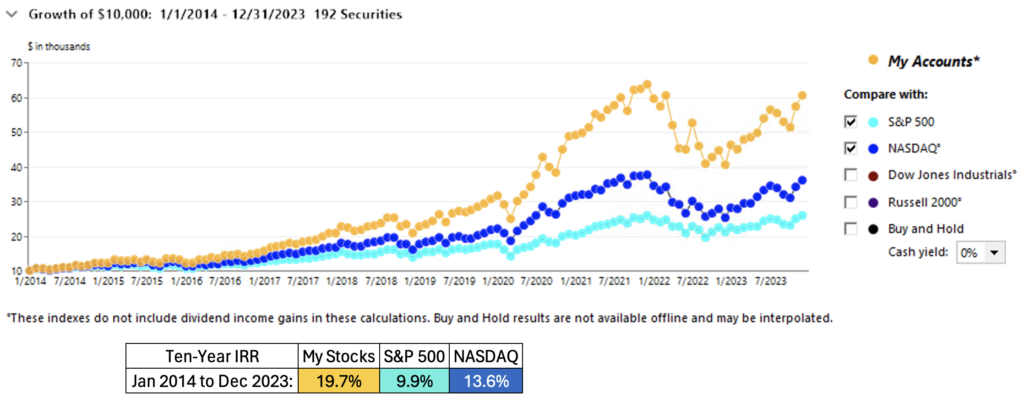
Which stocks helped me achieve 20% IRR over the past five years? Here are my top-20 best performing stocks. 12 of these returned greater than 20% for me. The list would be more or less the same if I expand the time horizon to ten years. I’ve owned most of these stocks for longer than ten years and their ten-year returns are also excellent.
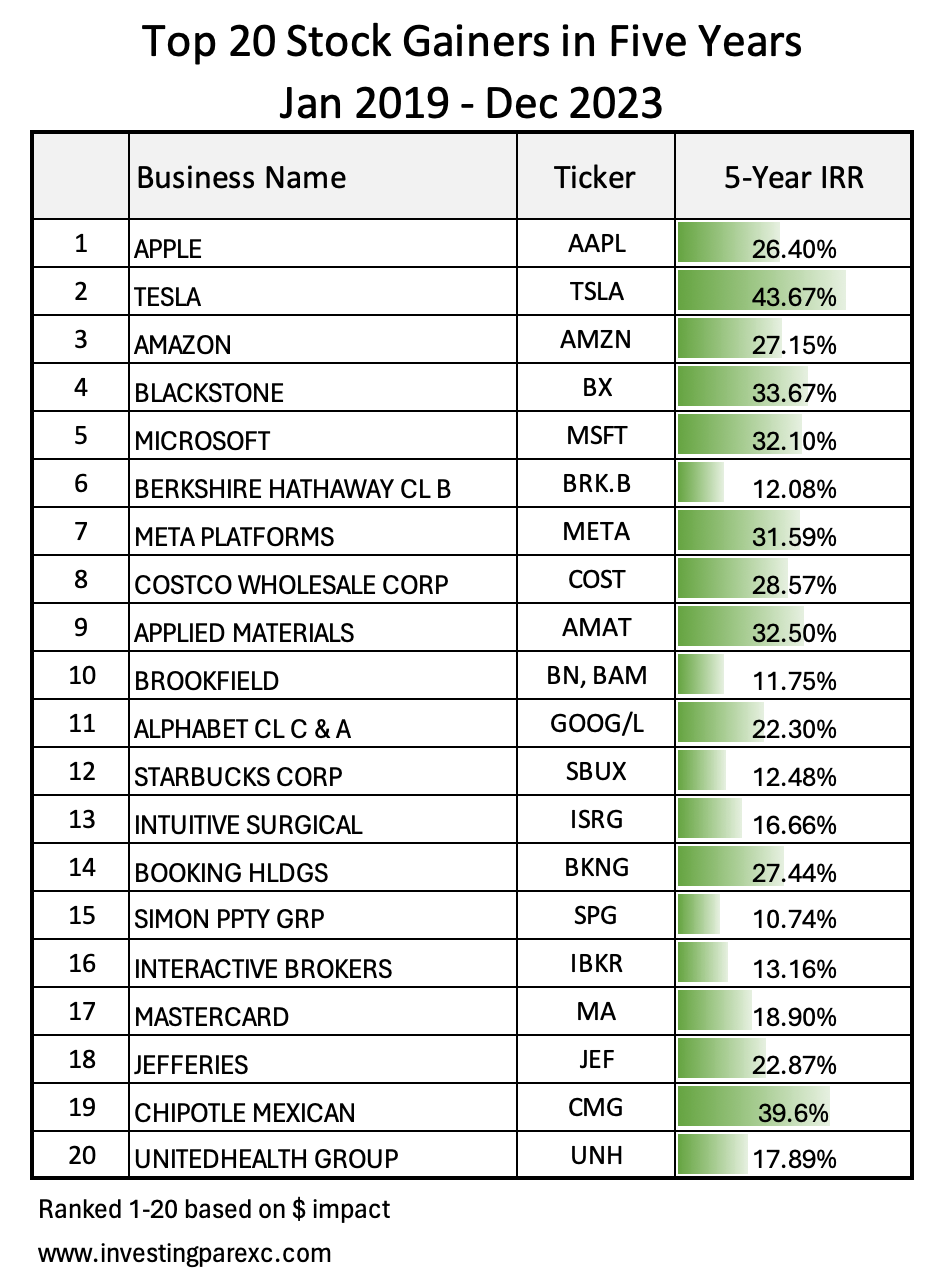
This next table shows where I’ve invested new money in five years. This list looks quite different though. Top of the table are not the same stocks that have been my best performers. They are businesses that are still work-in-progress. With the exception of a few that have 20+% IRRs, most others haven’t kept pace with my portfolio’s overall returns. In other words, they have been performance laggards. Still, I consider them all strong durable businesses that diversify my portfolio and over time will perform better.
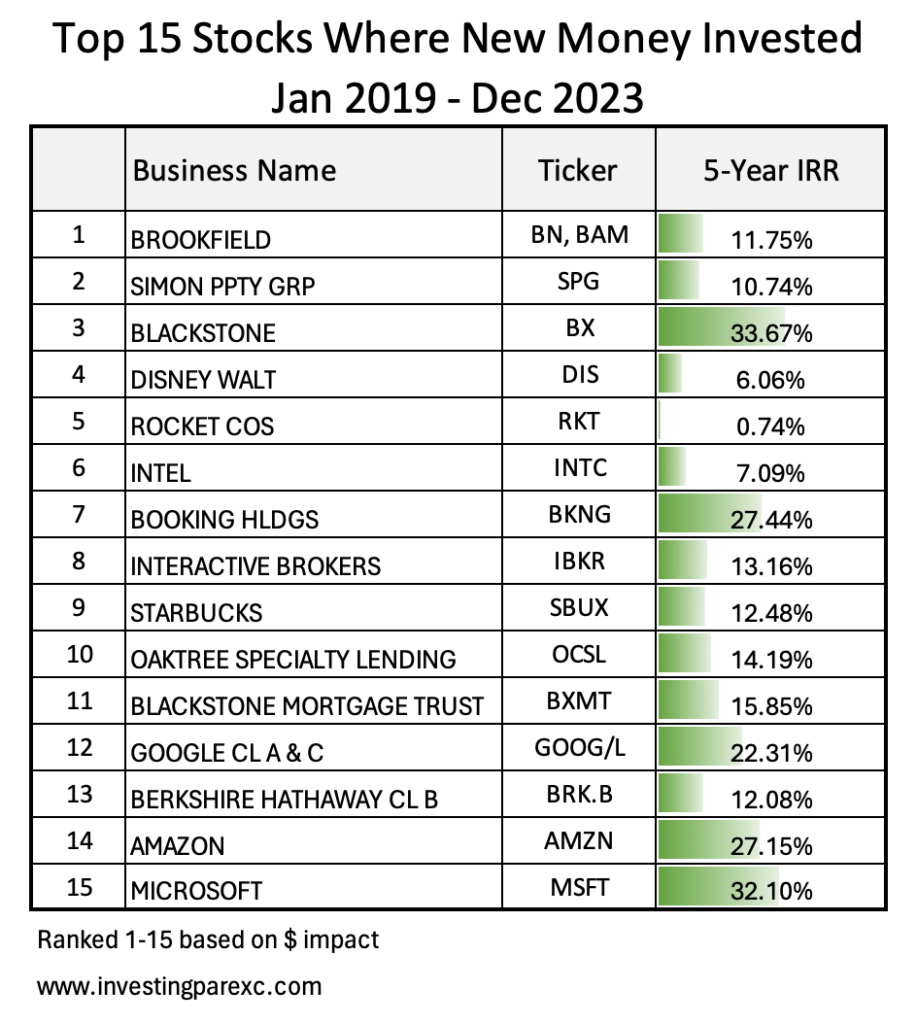
What about the next 10 years? I think 20% IRR will be difficult to achieve. I would be happy with 15% return over the next ten years. For one thing, the market’s relentless rise since the GFC (Great Financial Crisis of 2008) will be difficult to replicate. Another thing is that I was lucky to hitch a ride with some big-tech businesses that rose to great heights over this past period. Now many of them are at a scale where I don’t expect them to substantially outpace the global GDP growth anymore. They are still great businesses but likely won’t grow at 20% scale in the next ten years.
To get to my target 15% IRR over the next decade, I believe two factors could help me: One, opportunistic incremental buying of good businesses that are already in my portfolio whenever the stock market drops. Two, identifying new opportunities in promising growthy companies that I haven’t invested in before.
On the first front, I did a good amount of dry powder buying in 2022, as I’ve chronicled in past blog posts — see here: 1, 2, 3, 4. Today, we are no longer in that market phase. Let’s see how long before the market finds another reason to drop.
On the second front, I continue researching promising new businesses that could someday find room in my portfolio. More on those in a future post.
Thanks for sharing Emcee. Your posts are always well written and your insights are helpful.